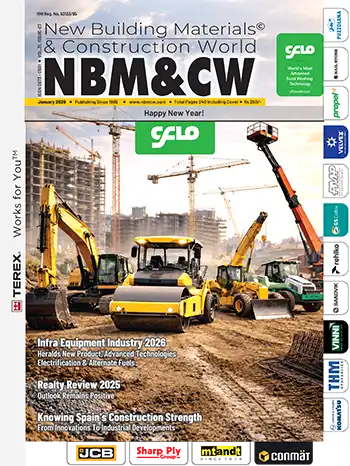
Fact File
Client: Ascentech Aero, IMT Manesar, Haryana
Category: Adaptive Re-use
Built Up Area: 10,300 sqft approx (Industrial + Office Space)
Photographs: Vibhor Yadav
Design Team
Sanjay Arora: Founder | Principal Architect
Sanchit Arora: Studio Head Architect | Concept Design Head.
Vandana Arora: Interior Designer | Decor Head
Virender Singh: Studio Technical Head | Architectural
Shitij Dogra: Architect/Conceptualization/Sketches
Contractor: Star Construction
Lighting: White Lighting Solutions.
Structural Consultant: Devender Damle
Spaces designed for specific equipment or machinery may no longer be conducive to the changes and hence the exercise of re-engineering buildings to adapt to new programs is the concept behind The Dancing Louvres
Ar. Sanjay Arora & Ar. Sanchit Arora
The Dancing Louvres is concentrated within a skin-form, the surfaces define the built volumes through louvres and punctures and develops an architectural image. The vertical fin louvred elements also act as a solar shading device particularly with the sun angle facing the facade throughout the day and creates a soulful play of light patterns through the shadow during the day. The embroidered surface creates a peripheral void, which, in addition to bringing in light, also creates a space for ventilation and smoking zone. With the ingenious incision of light into the inside of the building, it showcases clever use of re-architecting this adaptive re-use of a dilapidated warehouse in the industrial area of Manesar.

The transformation of an abandoned warehouse into an aero-component design studio and admin office becomes a meticulously surgical act of inserting technically expressive, delicate and lightweight implants of steel and concrete. The camouflage of the old and new re-creates a path of adaptive reuse, retaining the sheds and their structural system and only architecturally strengthening parts that were worn out or to accommodate the new.

The new programme consists of essentially two large spatial entities: an office space spread over two floors and a working design industry on the ground floor. The interiors have a very non-industrial appeal and profess a different philosophy to what one sees outside; blues, greys, and whites blend in to create a smooth, sleek and clean space identity within. The interweaving of different natures of space frameworks sets up a very interesting architectural dialogue for the visitors.
















